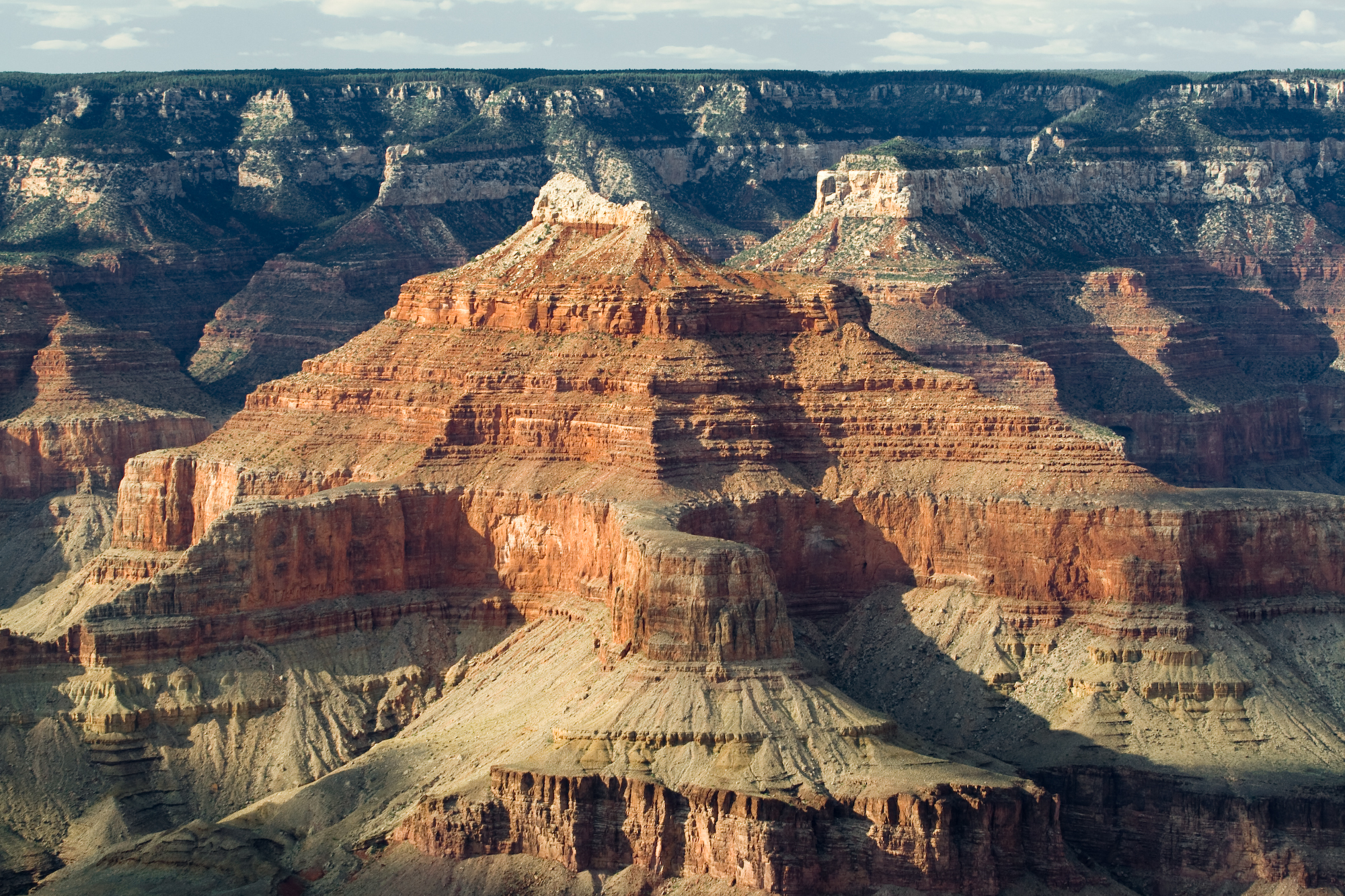 |
| http://upload.wikimedia.org/wikipedia/commons/f/fe/USA_09855_Grand_Canyon_Luca_Galuzzi_2007.jpg |
There are many layers of rocks that form the Grand Canyon. These layers are called Strata, which are sedimentary rocks that are deposited in layers. The canyon is composed of different kinds of sedimentary rocks such as: shale, sandstone, limestone, and granite. All of these rocks have lithified over time. Geologist use these rock layers to research and learn more about Geological Time Scale, which describes event that occured millions of years ago.
 |
| Geological Time Scale http://en.wikipedia.org/wiki/File:Geologic_Clock_with_events_and_periods.svg |
 |
| Diagram shows the different layers of sedimentary rocks http://upload.wikimedia.org/wikipedia/commons/1/14/Stratigraphy_of_the_Grand_Canyon.png |
Along with the Grand Canyon, Arizona is also home to another geological site, the Vulcan Volcano. The Vulcan Volcano is cinder cone volcano located on the north rim of the Grand Canyon. When pieces of rock, tephra, are ejected out of the volcano, the tephra falls back down creating a plyroclastic volcano and also forming very small crystals..
Images of Vulcan Volcano
 |
| Formation of Cinder Cone Volcano (used from Dr. Casey's ppt) http://fast.ucdenver.edu/case/1202/Battle/Build/VolcanicEx/tephra_diagrams.gif |
Works Cited:
http://fast.ucdenver.edu/case/1202/Battle/Build/VolcanicEx/tephra_diagrams.gif
http://upload.wikimedia.org/wikipedia/commons/1/14/Stratigraphy_of_the_Grand_Canyon.png
http://en.wikipedia.org/wiki/File:Geologic_Clock_with_events_and_periods.svg
http://upload.wikimedia.org/wikipedia/commons/f/fe/USA_09855_Grand_Canyon_Luca_Galuzzi_2007.jpg
http://www.und.edu/instruct/mineral/101intro/grandcanyon/grandcan.htm
http://www.obsidianlab.com/pan_toroweap/vulcans_throne_pan.html
http://www.extremescience.com/zoom/index.php/volcanoes/31-cinder-cone-volcanoes
http://www.bobspixels.com/kaibab.org/geology/gc_layer.htm#kl
http://en.wikipedia.org/wiki/Grand_Canyon#Geology